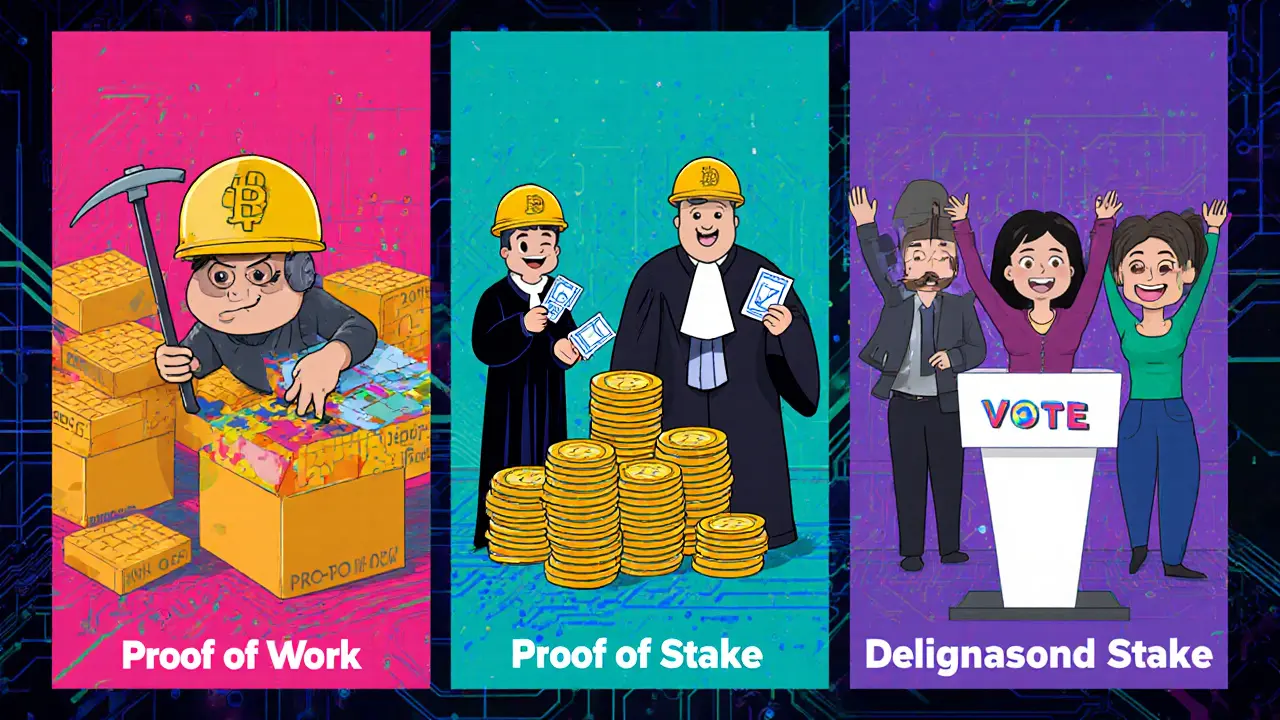
- 27 Aug 2025
- Elara Crowthorne
- 16
Double-Spending Prevention Calculator
Risk Assessment Result
When a crypto exchange receives a deposit, it has to be sure that the same coins won’t disappear from the ledger a few minutes later. That risk is called double-spending the attempt to spend the same digital token in more than one transaction. If an attacker can trick the platform into accepting a deposit that later gets rejected, they can walk away with the withdrawn funds while the exchange loses the original coins. The good news is that modern exchanges stack several defenses-consensus protocols, confirmation rules, real‑time monitoring, and emerging hybrid solutions-to make double-spending virtually impossible.
Why Double‑Spending Targets Exchanges
Exchanges act as the bridge between on‑chain assets and off‑chain user accounts. This position creates a time window: the moment a user sends a transaction to the exchange’s wallet until the exchange records enough confirmations to consider it final. Attackers focus on that window because they can submit a second transaction that moves the same coins elsewhere. If the exchange releases funds before the original transaction is fully confirmed, the attacker can reverse the deposit on the blockchain and keep the withdrawn amount. The problem is amplified for large withdrawals, low‑volume coins, or platforms that use lax confirmation thresholds.
Consensus Mechanisms: The First Line of Defense
At the heart of every blockchain is a consensus protocol that decides which block becomes part of the immutable ledger. The stronger the consensus, the harder it is to rewrite history and pull off a double‑spending attack.
Below are the three most common mechanisms and how they deter double‑spending:
- Proof of Work (PoW) requires miners to solve a computational puzzle before adding a block. Controlling 51% of the total hash power would let an attacker create an alternate chain, but the cost of such power is prohibitive for most networks.
- Proof of Stake (PoS) selects validators based on the amount of cryptocurrency they lock up as collateral. Misbehaving validators lose part or all of their staked tokens, turning a double‑spending attempt into a direct financial loss.
- Delegated Proof of Stake (DPoS) lets token holders vote for a small set of trusted delegates who produce blocks. Delegates are regularly re‑elected, and any detected misconduct results in immediate revocation of voting rights and loss of deposited collateral.
| Mechanism | Economic Barrier | Energy Cost | Centralization Risk | Typical Confirmation Time |
|---|---|---|---|---|
| Proof of Work | Control >51% of hash power | Very high (electronics, electricity) | Medium - mining pools can concentrate power | 10‑30 minutes (depends on block time) |
| Proof of Stake | Own >50% of staked tokens | Low (no mining hardware) | Higher - stake concentration can lead to oligarchies | Seconds to a few minutes |
| Delegated Proof of Stake | Control over elected delegates | Low | Higher - small delegate set can be targeted | Seconds |
For exchanges, the takeaway is simple: the stronger the consensus, the fewer confirmations they need to feel safe. Bitcoin’s PoW still demands six confirmations for high‑value deposits, while many PoS chains accept a single confirmation or even “finality” after a validator votes.

Transaction Verification and Confirmation Policies
Even with a robust consensus, exchanges add their own safety nets. Every incoming transaction passes through a verification engine that checks the blockchain for any conflicting spends. If a conflict is found, the transaction is rejected outright.
Key policy levers include:
- Number of confirmations. Most platforms require six for Bitcoin, three for Ethereum, and custom thresholds for newer chains.
- Wait periods for large withdrawals. An extra 30‑60 minutes can be imposed on withdrawals above a certain USD value, allowing additional blocks to solidify the transaction.
- Account‑age or KYC‑based rules. New accounts with limited history often face stricter confirmation counts to offset higher risk.
These checkpoints create multiple “buffer zones” where an attacker would need to outpace the network’s block production and the exchange’s internal timers simultaneously-an almost impossible feat.
Real‑Time Monitoring and Machine‑Learning Fraud Detection
Beyond protocol‑level safeguards, modern exchanges run continuous monitoring systems. These platforms ingest blockchain data, order‑book activity, and user behavior to spot anomalies such as rapid deposit‑withdraw cycles or unusual address patterns.
Key components:
- Machine learning algorithms models that learn typical transaction flows and flag deviations. For example, a sudden spike in low‑value deposits followed by immediate large withdrawals can trigger a freeze.
- Behavioral analysis profiles user activity over time to detect sudden changes. If a user who usually trades small amounts suddenly initiates a multi‑million withdrawal, the system raises an alert.
- Integration with on‑chain analytics services that track token movement across mixers, tumblers, and known malicious addresses.
When a suspicious pattern is detected, the exchange can automatically place a hold, request additional verification, or roll back pending deposits before any funds leave the platform.

Hybrid Consensus and Future Directions
Researchers are experimenting with hybrid models that blend PoW’s security with PoS’s efficiency. The goal is to keep the economic barrier high while cutting down confirmation latency.
Examples include:
- Layer‑2 rollups that anchor their state on a PoW main chain but settle disputes using PoS validators.
- “Proof of Authority” checkpoints within PoS networks that add a small group of trusted nodes to certify finality faster.
- Adaptive systems that switch between consensus modes based on network load, ensuring both speed and safety.
For exchanges, hybrid solutions mean they can lower confirmation thresholds for certain tokens without exposing themselves to new attack vectors. However, adoption still requires thorough testing and clear governance frameworks to avoid centralization pitfalls.
Actionable Checklist for Exchange Operators
Turn the theory into practice with this concise list:
- Map each supported blockchain’s recommended confirmation count and apply it uniformly.
- Implement an automated verification layer that rejects any transaction with a conflicting spent output.
- Set tiered wait periods for withdrawals based on amount, account age, and geographic risk.
- Deploy machine‑learning models that ingest both on‑chain data and user behavior to flag rapid deposit‑withdraw loops.
- Regularly audit staking and validator configurations for PoS/DPoS chains to ensure your hot wallets are not tied to low‑reputation validators.
- Stay updated on hybrid consensus research and run test‑net pilots before moving production assets.
Following these steps creates a multi‑layered shield that makes double‑spending attacks impractical, no matter how creative the adversary.
Frequently Asked Questions
What is the minimum number of confirmations needed for Bitcoin?
Most exchanges require six confirmations for Bitcoin deposits. The rule of thumb comes from the original Bitcoin whitepaper, which suggested that after six blocks the probability of a successful 51% rewrite becomes negligible.
Can a 51% attack succeed on a PoS network?
In PoS, a 51% attack would require owning more than half of the total staked tokens. Acquiring that amount usually means buying a massive portion of the circulating supply, which drives the price up and makes the attack economically unattractive.
How do machine‑learning models detect double‑spending attempts?
Models are trained on historical transaction data labeled as normal or fraudulent. They learn patterns such as rapid deposit‑withdraw sequences, unusual address reuse, and mismatched timestamps. When a new transaction matches a risky pattern, the system raises an alert for manual review or automated blocking.
Are hybrid consensus mechanisms ready for production?
Hybrid models are still in the testing phase for most public chains. A few enterprise blockchains have piloted them, but widespread adoption will likely take a couple of years as standards and security audits mature.
What extra steps should be taken for new or low‑volume tokens?
Apply stricter confirmation counts (often double the standard), enforce longer withdrawal hold periods, and monitor those addresses with heightened behavioral analytics until the token’s on‑chain history proves reliable.


16 Comments
While many proclaim that consensus mechanisms alone guarantee safety, one must consider that even robust protocols can falter under coordinated attacks; therefore, reliance on confirmations alone is, at best, a partial safeguard.
Exchanges should match each blockchain’s recommended confirmation count to the asset’s risk profile; this simple rule reduces double‑spending chances dramatically.
But have you ever wondered why those recommendations change just as you start to trust them? The hidden miners’ cartels, the secret validator coalitions-they tweak parameters overnight, and we’re left chasing moving targets!
A solid verification pipeline acts like a safety net, catching errant spends before they slip through to users.
Exactly! When the system checks each incoming transaction against the blockchain, any conflict is flagged early, so the exchange can halt the deposit and protect its users.
Balancing security with user experience requires a nuanced policy that considers transaction size, account age, and network conditions; a one‑size‑fits‑all approach inevitably leaves gaps.
Indeed-set tiered hold periods, integrate real‑time analytics, and you’ll see the risk curve plummet; act now, and your platform will earn trust fast!!
Honestly, the whole thing feels like a cat‑and‑mouse game.
I understand how daunting it can be to configure these safeguards, especially for newer exchanges; taking it step by step, starting with basic confirmation thresholds, builds a solid foundation.
It is ethically unacceptable for any platform to ignore proven double‑spending defenses, lest they betray their users’ trust and invite avoidable loss.
Your point is well taken-ethical responsibility must guide every security decision, and transparent policies reinforce that commitment.
In the grand tapestry of cryptographic finance, the notion that simple confirmation counts are sufficient smells of naïveté, a comforting lie whispered by those who profit from complacency. History teaches us that every major double‑spending incident was preceded by a quiet erosion of network consensus, often orchestrated by shadowy coalitions seeking to destabilize markets. These coalitions, hidden behind layers of anonymity, manipulate mining pools or validator sets to tip the balance in their favor, rendering any static rulebook obsolete. Consequently, an exchange that rigidly adheres to a six‑confirmation rule for Bitcoin while ignoring the fluid dynamics of hash‑rate distribution is essentially inviting disaster. Moreover, the rapid development of layer‑2 solutions and cross‑chain bridges introduces novel attack vectors that bypass traditional confirmation safeguards entirely. A forward‑looking defense strategy must therefore incorporate adaptive monitoring, behavioral analytics, and the capacity to suspend withdrawals at the first sign of anomalous activity. Relying solely on the immutable ledger ignores the reality that blockchain data can be replayed, reorganized, or obscured through sophisticated mixing services. Even the most secure PoS networks are vulnerable when a single entity amasses a majority of stake, turning financial incentives into instruments of coercion. Thus, an exchange should demand not only confirmations but also verifiable proof of custody from reputable validators, especially for high‑value assets. Layer‑2 rollups, while improving throughput, shift trust to a set of sequencers whose misbehavior can be concealed unless audited continuously. The only way to mitigate these layered threats is to maintain a dynamic policy that scales confirmation requirements with observed network health metrics. Regular audits of staking contracts, careful selection of delegations, and transparent reporting to users form the backbone of a resilient operation. If an exchange neglects these practices, it tacitly condones the very attacks it claims to guard against, betraying both principle and profit. Stakeholders, regulators, and ordinary traders alike deserve a system that anticipates manipulation rather than reacting to its aftermath. In short, the future belongs to platforms that treat security as a living process, not a static checklist. Any claim that the current state of technology offers a silver bullet is, at best, an illusion, and at worst, a dangerous prelude to loss.
Wow, that was a marathon of insight! 🌟 It really underscores why we need to stay vigilant. 👍
Great summary! By sharing these practices, we empower each other, and the community grows stronger every day!!!
Indeed, the checklist you provided aligns with industry standards such as the FATF guidance and the ISO/IEC 27001 framework; ensuring compliance will further bolster user confidence.
Yet, one might argue that the very act of codifying security into rigid rules stifles the creative evolution of decentralized finance, locking us into a deterministic paradigm.